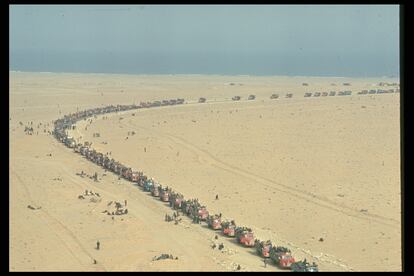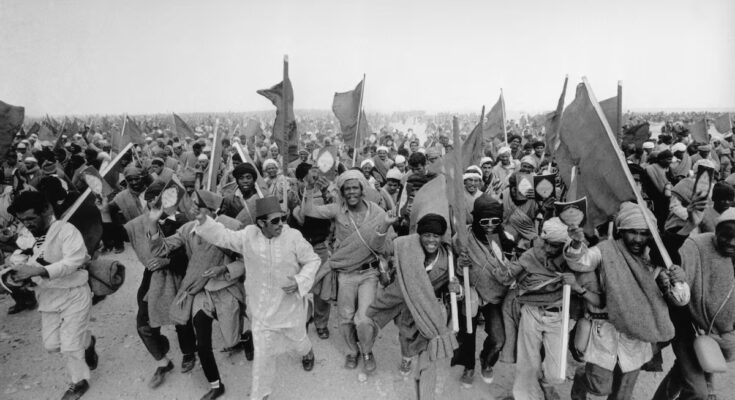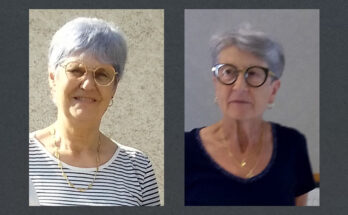At the foot of the purple Atlas mountain range, from Morocco to Tunisia, the desert begins almost without transition. At first the mind feels confused. The wind modifies everything that is not itself. Something similar happened with the fate of its inhabitants.
Everything flows and changes shape, masked by an immutable monotony, since in 1970 a crowd gathered on the Hatarrambla esplanade, in El Aaiún, to ask the colonial power, Spain, for a solution for its future. The answer was the sharp sound of a trumpet. A company from the Tercio opened fire. But the imposed silence did not last long. International pressure forced Spain to start the decolonization process.
Shortly afterwards, the Territorial Police seized some brochures written in broken Spanish and full of gallicisms. His tone was reminiscent of the long disquisitions of left-wing groups in European universities of the time. The Polisario Front was born with a clear desire for self-determination.
In that sparsely populated and resource-rich territory everything seemed possible. For centuries, before maps imposed a new geometry, one of their sages referred to that piece of desert as “the country that knows no sultan or money.” The Sahrawis were governed by a tribal social organization, consolidated starting from the 17th century, after the Char Bubba war. Their survival depended on the camel which had enabled the colonization of the desert and had provided food, transport and shelter. They had developed their own culture that made life possible in such a hostile environment. For those wondering how to live here, it was the great discovery.
The discovery of Bu Craa phosphates radically transformed that reality. Sedentarization, the abandonment of nomadism and acculturation were the prelude to change. When Spain announced the request for a self-determination referendum, the Sahrawis – isolated for centuries – had to draw their own mental map of the world. Find out where The Hague was located, for example. At Morocco’s request, the International Court of Justice had to rule on the Sahara’s historical ties with Morocco and Mauritania.
That was a crucial summer. A few days before the verdict, the 1975 UN Mission confirmed that the Sahrawi majority supported independence. And also at the Polisario. The Spanish authorities have confirmed this, as well as the irrelevance of the PUNS, the pro-Spanish party, created to continue to protect the territory once independent. This fact could influence Spain’s subsequent position in some way.
The ruling of the Hague Court denies Moroccan and Mauritanian sovereignty over the territory. But King Hassan II distorted the outcome in an interminable speech, claiming that the opposite had happened. The same thing that Mohammed VI did after the latest UN resolution, attributing to himself sovereignty over the territory that the text does not grant him.
But the real response was the call for the so-called Green March, 350,000 civilians from outside the territory behind whom his army was hiding. What did Spain do? Weakened following Francoism and under pressure from the United States, at the height of the Cold War, she decided to withdraw. In secret meetings, without the knowledge of the UN, he ceded territory to Morocco and Mauritania, failing to respect his commitments.
The Moroccan army entered with blood and fire. The Sahrawi population fled under bombardment with napalm and white phosphorus. During the escape, many buried themselves in the sand during the day, with a reed to breathe, and continued their journey at night.
Women organized refugee camps in hammada Algeria, an extreme desert, where the wind sometimes generates fear, but where, over time, they have built their home. The men waged an unequal war against a much larger and better equipped army. They didn’t win, but they weren’t defeated on the battlefield either.

For fifteen years its military effectiveness was astonishing and Morocco, exhausted, accepted the Baker Plan which supported a consultation for self-determination. Even the United States saw no other way to end the conflict. Hassan II has found another: to eternalize it. Internal divisions among Sahrawis have allowed him to indefinitely postpone the agreement on who will vote. So self-determination became impossible.
Today his son, Mohammed VI, repeats the maneuver with the promise of autonomy. How can we believe in effective autonomy when, within Morocco itself, the response to the protests in the Rif is repression and abandonment?
So, time achieved what enemy shells could not. Today the struggle is fought in the symbolic sphere, in the networks, in the media, in the story. While the Polisario persists in the logic of the Cold War, Morocco tries to present itself as the only possible alternative, investing in infrastructures and cultural events that engulf the Sahrawi identity and present it as a facet of a different Morocco. It aims to de facto legitimize the occupation and attract foreign investment, despite the dubious legal situation.
The latest UN resolution recommends autonomy, without excluding self-determination, but does not recognize Morocco’s sovereignty over Western Sahara. However, both options – autonomy and independence – seem equally unlikely today. The international community has failed to articulate a solution that goes beyond paper and, 50 years after the diaspora, time is a lethal weapon and 200,000 Sahrawis live their lives deprived of their land, which several generations have not yet known.



